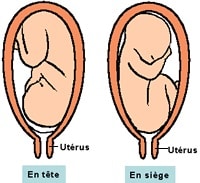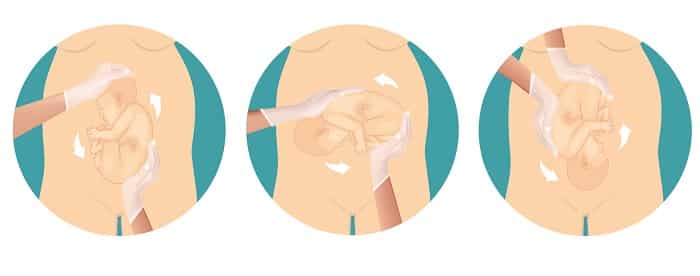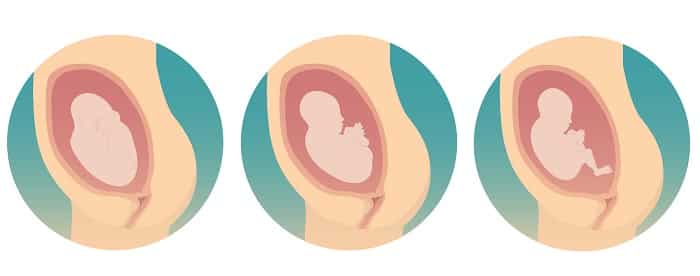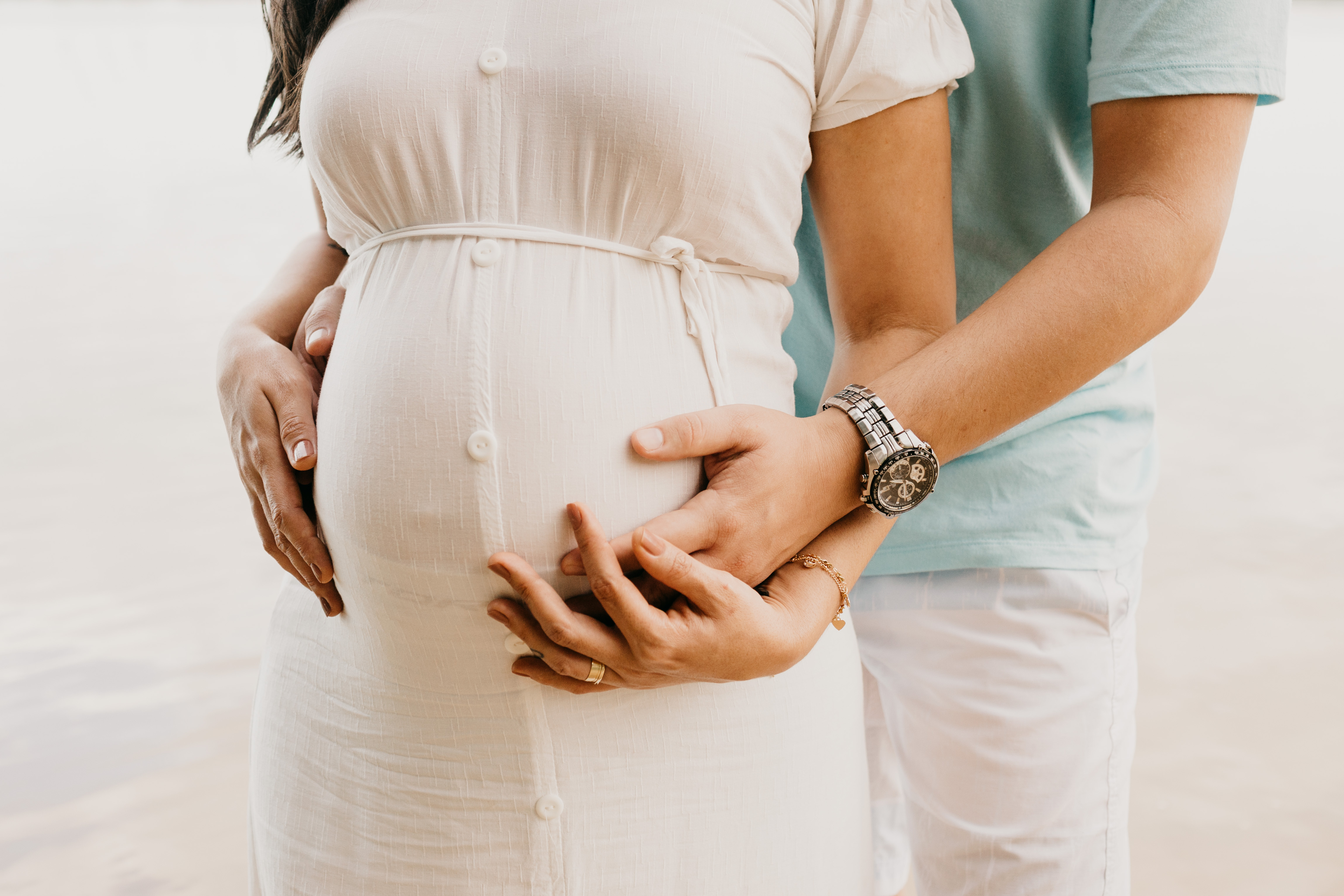In this article, I want to share more information with you about breech positions and birth.
Throughout your pregnancy monitoring, your caregiver will make sure that you’re doing well and that your baby is growing based on expectations. You will have ultrasounds at different times for different reasons and will vary from woman to woman depending on your pregnancy.
 During follow-up visits, your caregiver might touch your abdomen, listen to the baby’s heart, and might think that your baby is buttocks first in your pelvis. However, they will wait until about 36 weeks of pregnancy before evaluating the situation. This is because the babies frequently change their position themselves.
During follow-up visits, your caregiver might touch your abdomen, listen to the baby’s heart, and might think that your baby is buttocks first in your pelvis. However, they will wait until about 36 weeks of pregnancy before evaluating the situation. This is because the babies frequently change their position themselves.
Is it dangerous if they remain in a breech position? Not necessarily. The baby will be fine in that position, but a breech birth is more problematic given the larger diameter of the baby if their head exits last.
Around 4% of babies are breech, and if there are no observed contraindications, your caregiver might suggest a version between the 36th and 37th weeks of pregnancy. Parents always have the choice of trying a version. Your agreement is always voluntary.
Photo source: doctissimo.fr
What is a version?
A version is a procedure conducted on the outside the mother’s stomach to move the baby, turning it to the head-first position.
This procedure is performed by a medical specialist in the hospital after a control ultrasound checking the baby’s position, the amount of fluid and the location of the umbilical cord to guide their work.
The doctor will act prudently for this procedure, and if they suggest it, it means that there’s a good chance it will work. If it becomes more difficult than expected, they will stop the procedure and send you back to your doctor, who will determine the next steps.
Version success rates are often around 40% to 50%, but some statistics indicate up to 58%.

Thanks to www.pregnancyinfo.ca for the illustrations.
Version Contraindications
A version won’t be suggested if:
- If there are already contraindications for a vaginal delivery. Why try to turn the baby if you will have a caesarian birth anyways?
- If there’s an insufficient amount of amniotic fluid (oligohydramnios), because the procedure will be too painful for the mother, and changing the position will be difficult if the environment isn’t sufficiently aquatic.
- If the baby has growth delays.
- If there are twins.
- If there are abnormal signs, such as the presences of fibromas or pregnancy complications.
Possible Alternatives to Versions
Often, when parents tell me that their baby was breech before the end of pregnancy, I suggest that they see an osteopath or acupuncturist specialising in obstetrics to help relax their structures. These caregivers can use specific procedures to work on the pelvis to provide the baby space to change position themselves. They will also suggest different positions to help extend the mother’s torso, stretch their upper body to increase the baby’s space and ease its mobility.
Anyways, it can’t hurt, and if the baby doesn’t change position, at 36 weeks version will still be a possibility.
Breech Vaginal Birth (buttocks first)
To be able to give birth to a breech baby vaginally, you first have to evaluate each woman’s situation and to focus on the benefits for both the mother and baby. That said, you should understand that it’s difficult to compare yourself to another person, because you’re all different, as are each situation.
Attempting a Breech Birth
To ensure that the efforts aren’t in vain, the doctor will tell you why they will choose one alternative over another.
First, before they will tell you if they attempt a breech birth, they will examine:
- The baby’s weight, which will usually be estimated with ultrasound at between 2.5 kg and 3.8 kg. If the baby is too big, this can lead to complications, so a caesarian will likely be suggested in this case.
- They type of breech. Is the baby in a real “V” with their legs and thighs properly placed (complete or frank breech, or one foot first?)
- The woman’s previous childbirth experiences.

Figure 1: Frank Breech
Figure 2: Complete Breech
Figure 3: Footling Breech (one of the feet pointing down)
Thanks to www.pregnancyinfo.ca for the illustrations.
Usually, they will wait for labour to start on its own, but sometimes they might carefully use oxytocin (a hormone that provokes contractions) to stimulate labour a bit if everything is going fine. The doctor will then examine the woman’s status, chances of success, possible complications, etc. So, if labour hasn’t started, preferably it won’t be induced.
It’s also true that, if the woman already has other risk factors during pregnancy, such as hypertension, pregnancy diabetes, or a chronic illness, caregivers will avoid multiplying risks for no good reason.
Caesarians
Caesarians due to breech will be likely in several situations, including:
- A mother with an abnormal pelvis
- A large baby (more than 3.8 kg)
- The baby’s head is very large
- An in-utero growth delay (a more fragile baby)
- Sometimes for very premature babies (to save their energy)
- History of very difficult childbirths in the past
- Already had caesarian births
A caesarian may also be performed at any time during an attempted breech birth if:
- The baby’s heartbeat shows signs of weakening
- The dilation of the cervix stagnates despite using oxytocin
- Labour hasn’t generally progressed for more than an hour
- The baby descends poorly into the pelvis
Even if the breech occurs very low in the mother’s pelvis, it’s always possible to conduct a caesarian if necessary.
So that sums up some of the main points about breech positions and birth. I hope this article can help you understand the situation and point you to different possible options for you and your doctor.
Please read these other related articles (in french):
Or watch these videos (in french):
Marie Fortier
The Baby Expert
References :
-
Soins infirmiers Périnatalité : Deitra Leonard Lowdermilk, Shannon E.Perry, Kitty Cashion, Chenelière Éducation, 2012, p.812-814
-
SOGC 2009 Recommandations de l’accouchement par siège
-
https://www.inspq.qc.ca/mieux-vivre/grossesse/la-preparation-l-accouchement/presentation-du-bebe-par-le-siege
-
https://cisss-outaouais.gouv.qc.ca/wp-content/uploads/2022/11/2022-11-28-VERSION-par-manoeuvres-externes-francais.pdf


